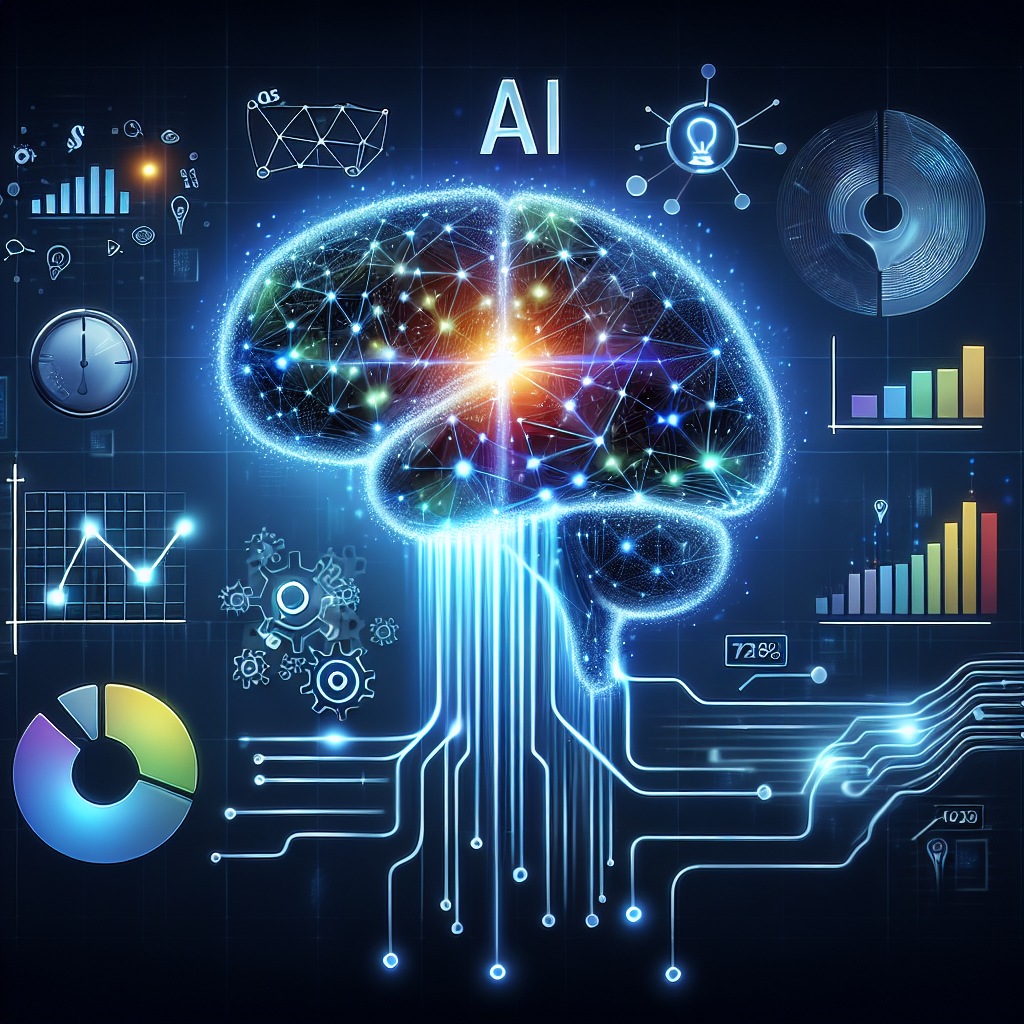The Role of AI in Predictive Analytics for Business Intelligence
In today’s fast-paced business world, data plays a crucial role in decision-making processes. Companies are constantly collecting vast amounts of data from various sources, such as customer interactions, sales transactions, social media, and more. However, the challenge lies in making sense of this data and turning it into actionable insights that can drive business growth and success.
This is where predictive analytics comes into play. Predictive analytics is the process of using historical data, statistical algorithms, and machine learning techniques to predict future outcomes based on patterns and trends in the data. By analyzing past data and identifying patterns, predictive analytics can help businesses make more informed decisions, anticipate market trends, optimize operations, and ultimately improve overall business performance.
One of the key technologies that enable predictive analytics is artificial intelligence (AI). AI refers to the simulation of human intelligence processes by machines, particularly computer systems. AI algorithms can analyze large datasets, detect patterns, and make predictions based on the data, often with a higher degree of accuracy than traditional statistical methods.
AI-powered predictive analytics has revolutionized the way businesses leverage data to drive decision-making. By harnessing the power of AI, businesses can uncover hidden insights, identify potential risks and opportunities, and make more accurate predictions about future outcomes. Let’s explore the role of AI in predictive analytics for business intelligence in more detail.
1. Data Collection and Preparation: AI algorithms can automate the process of collecting, cleaning, and preparing data for analysis. AI-powered tools can extract, transform, and load data from multiple sources, identify and correct errors in the data, and ensure data quality and consistency. This streamlines the data preparation process and enables businesses to analyze data more efficiently.
2. Pattern Recognition and Analysis: AI algorithms excel at detecting patterns and trends in data that may not be immediately apparent to human analysts. By analyzing historical data, AI algorithms can identify correlations, outliers, and relationships between variables, allowing businesses to gain valuable insights into customer behavior, market trends, and business performance.
3. Predictive Modeling: AI algorithms can build sophisticated predictive models that can forecast future outcomes based on historical data. By training AI models on historical data, businesses can predict customer behavior, sales trends, demand for products, and other key business metrics. These predictions can help businesses make informed decisions, allocate resources more effectively, and mitigate risks.
4. Real-Time Insights: AI-powered predictive analytics can provide real-time insights into changing market conditions, customer preferences, and business performance. By continuously analyzing incoming data streams, AI algorithms can alert businesses to emerging trends, anomalies, and opportunities in real-time, enabling businesses to make timely decisions and take proactive actions.
5. Personalization and Recommendation: AI algorithms can personalize customer experiences by analyzing customer data and delivering targeted recommendations and offers. By leveraging AI-powered recommendation engines, businesses can deliver personalized product recommendations, content, and services to customers based on their preferences and behavior. This can enhance customer satisfaction, drive sales, and improve customer loyalty.
6. Risk Management: AI-powered predictive analytics can help businesses identify and mitigate risks before they escalate. By analyzing historical data and identifying patterns of risk factors, AI algorithms can predict potential risks, such as fraud, supply chain disruptions, or market fluctuations, and enable businesses to take preventive measures to mitigate these risks.
7. Optimization and Automation: AI algorithms can optimize business processes and automate repetitive tasks, enabling businesses to operate more efficiently and effectively. By analyzing data and identifying opportunities for improvement, AI algorithms can recommend optimization strategies, automate decision-making processes, and streamline operations across various business functions.
FAQs:
Q: What are the key benefits of using AI in predictive analytics for business intelligence?
A: The key benefits of using AI in predictive analytics for business intelligence include improved decision-making, enhanced customer experiences, increased operational efficiency, better risk management, and competitive advantage. AI-powered predictive analytics can help businesses uncover hidden insights, predict future outcomes accurately, and drive business growth and success.
Q: How can businesses implement AI in predictive analytics for business intelligence?
A: Businesses can implement AI in predictive analytics for business intelligence by investing in AI technologies, such as machine learning algorithms, AI-powered tools, and data analytics platforms. Businesses can also hire data scientists and AI experts to develop and implement AI models, train AI algorithms on historical data, and integrate AI-powered predictive analytics into existing business processes.
Q: What are some challenges of using AI in predictive analytics for business intelligence?
A: Some challenges of using AI in predictive analytics for business intelligence include data quality issues, lack of skilled personnel, privacy concerns, and ethical considerations. Businesses may struggle with collecting and preparing high-quality data, finding and retaining data scientists with AI expertise, ensuring data privacy and security, and addressing ethical concerns related to AI algorithms and decision-making processes.
Q: How can businesses measure the ROI of using AI in predictive analytics for business intelligence?
A: Businesses can measure the ROI of using AI in predictive analytics for business intelligence by tracking key performance indicators (KPIs) related to business outcomes, such as revenue growth, cost savings, customer retention, and operational efficiency. Businesses can compare the results of AI-powered predictive analytics initiatives with the results of traditional analytics methods to assess the impact of AI on business performance and calculate the ROI of AI investments.
In conclusion, AI plays a vital role in predictive analytics for business intelligence by enabling businesses to analyze data, predict future outcomes, and make informed decisions. By harnessing the power of AI, businesses can uncover valuable insights, optimize operations, enhance customer experiences, and mitigate risks. As AI technologies continue to evolve and mature, businesses that embrace AI-powered predictive analytics will gain a competitive edge in today’s data-driven business landscape.

